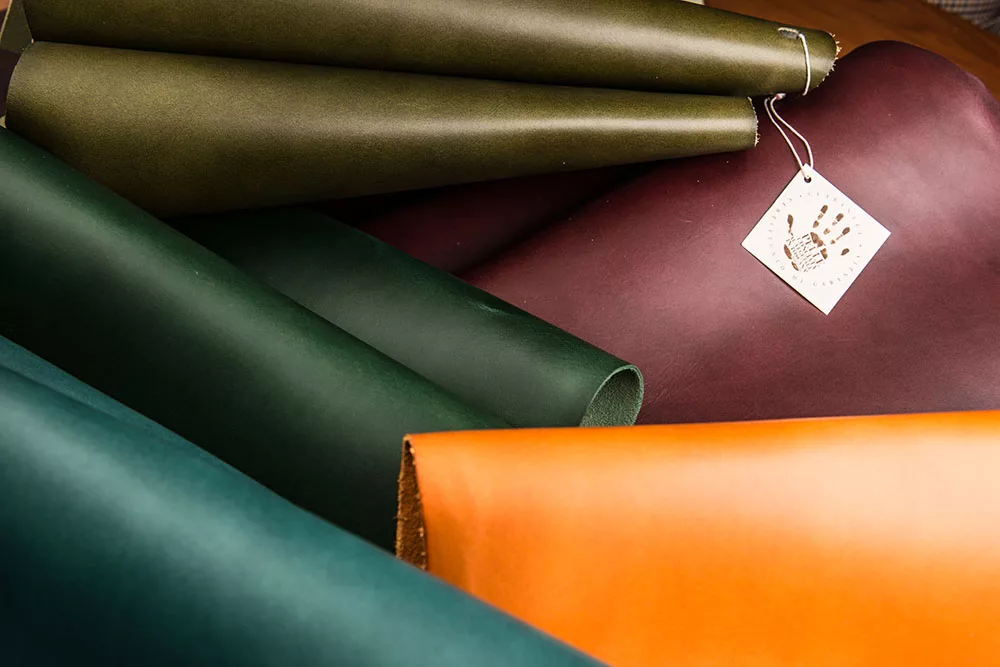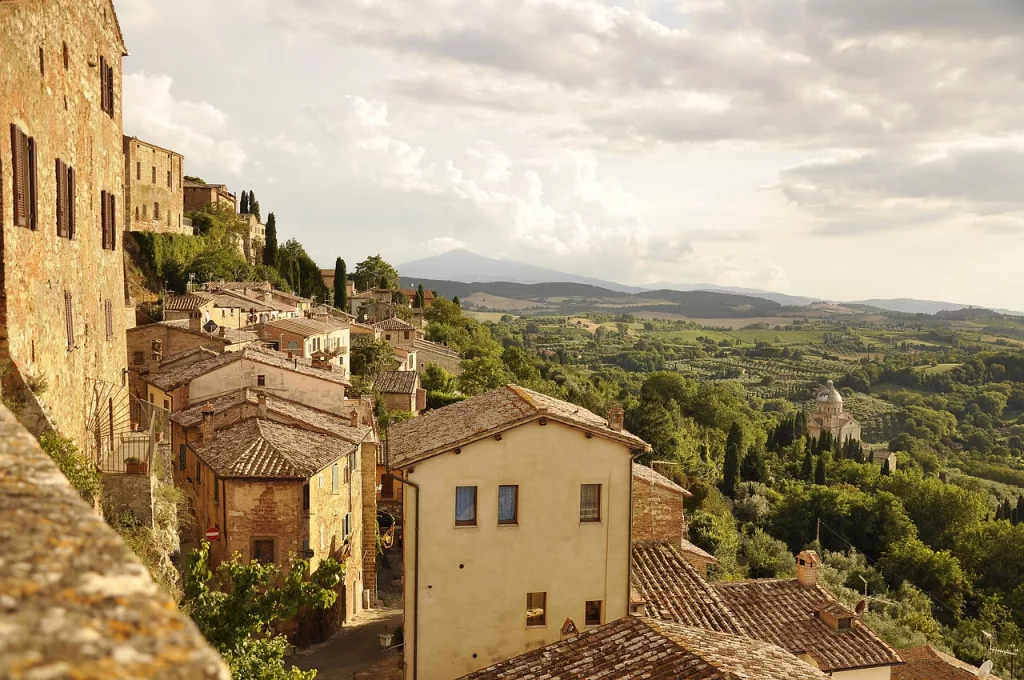Vegetable-Tanned vs Chrome-Tanned Leather: What is the difference?
The process to get something from a hide that may dry out or rot to leather that is long-lasting is called tanning. It derives its name from tannins – the natural substances in tree barks, leaves and fruits.
Tanning makes skins more durable, flexible and beautiful. It is one of our oldest known industries with the earliest tanning recipes going all the way back to 700 BC. Traditionally all leathers were vegetable-tanned with natural tannins because that was the only available process.
In the 1850s, chrome tanning which uses chromium sulphate salts to accelerate the tanning process and thus provide different properties to the final product was invented. This introduction was probably the biggest change in tanning history and today it’s estimated that 80-90 percent of all leather is chrome tanned.

Bovine leather is a by-product of the meat industry
Every year a total of 270 million cow hides become available for tanning with each hide typically having a surface area of 4.5 square meters. The initial steps in the tanning process are the same whether the leather is chrome or vegetable-tanned.
Raw hides come from animals as a by-product of the meat industry and the first step is to remove the hair by immersing the hides in a chemical solution for about 24 hours that are then passed through a machine with a knife. The hair is either discarded or collected to be used for bio-fuels so that nothing gets wasted in the process.
A talcum solution then gets sprayed onto the raw hides which go into rotating wooden barrels for a day or two. At this point the pH of the hides get lowered so that they are in an optimal condition for tanning. When the hides come out of the barrels rough ends are cut off and the hides are brought to a uniform thickness.
When this pre-tanning process is complete, the hides go into various tannin solutions. In vegetable tanning, these are made from mixing powders from natural materials, such as chestnut, mimosa, or oak bark, with water.
Different tanneries have their own unique recipes which have evolved over time and are closely guarded secrets. The vegetable tanning process is significantly slower than chrome tanning and can take several months where the hides move from solutions of lower to higher concentrations of tannins until they take on their final appearance.
A fine example of this is the English tannery J & FJ Baker’s Russian leather which takes 14 months to produce. Impeccable leather also comes from the Tuscan tannery district, located between the provinces of Pisa and Florence, where craftsmen still use traditional methods that have developed over many generations.
Because the tanning process takes a long time, as well as the fact that top-quality hides get selected, vegetable tanned leathers are often priced higher than chrome tanned leathers. Once the tanning process is completed, the hides are coloured and treated in drums with fats and waxes, such as beef tallow or beeswax, to give them their final finish.
The huge variety in tanning recipes and procedures creates leathers with their own distinct characteristics from different tanneries which become obvious when you touch and smell them.

Vegetable-tanned leather from Conceria Il Ponte located in the Tuscan tannery district
Using chromium salts rather than natural tannins speeds up the tanning process which can in some cases take as little as a day. This does not necessarily mean that chrome-tanned leather is of a lower quality than vegetable-tanned leather as the process does not have to be automated but can make use of similar time-consuming processes involved in making vegetable tanned leather.
Tanneries Haas, a traditional tannery in Alsace, uses chrome tanning to create their famous Zermatt calf leather, often applied as lining in luxury watch straps due to its sweat-resistant properties and durability. Chrome tanning is also used by the reputable tanneries Weinheimer and Horween Leather Company who both produce top leathers. However, the quality spectrum for chrome-tanned leather is much wider than it is for vegetable-tanned leathers.
One of the advantages of chrome tanning is that you end up with thin, flexible and soft leather which is excellent for making things like gloves. It also allows for a larger range of bright colours as it holds colour better.
Vegetable-tanned leathers are often more subtle in their colour, which gives them an elegant look that many people appreciate. They’re also more responsive to heat, making them easier to burnish and because most of them are aniline or semi-aniline dyed they have an absorbent structure where the leather develops a unique patina over time as you wear it. This property is however not exclusive to vegetable-tanned leather, as many chrome-tanned leathers are aniline dyed and will also patina with exposure to the elements.

Vegetable-tanned leather made with natural tannins have a lower environmental impact than chrome-tanned leathers
For the environmentally conscious, vegetable-tanned leather is by far the better option of the two. The chromium salts used to make chrome leathers can oxidize into toxic compounds and pollute the air, land, and waterways. Rinsing the chromium salts off the leather also requires a lot more water than what traditional vegetable tanning with natural tannins derived from plants does.
While we mainly use vegetable-tanned leathers, we believe that there is a place for both. What we value above all when we select the leathers that go into our watch straps is that they come from reputable, small-batch tanneries that strive for quality over quantity, and help ensure that the craftsmanship and traditional methods of leather making will be passed down to future generations.